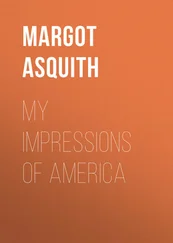Real impact of social constructions
Because Asian Americans exist partly as foreigners, much of the racism they encounter is in the form of nativism. In fact, it may not seem like racism at all and so not appear to assimilation theorists as problematic. Calls for immigrants to “go home” or critiques of bilingual education may stem from an extreme patriotism, from xenophobia, from concern over the use of tax dollars, and/or other motivations. It is not clearly racist, especially when race is understood within a black–white binary. But such calls can carry a racist assumption that certain immigrants, in particular those from less-developed nations, would corrupt the nation with their way of life (Brimelow 1998). The notion of the United States as a cohesive and moral nation is affirmed by framing Asian Americans and others as outside of the nation, as not full members (Lowe 1996). Whites become the embodiment of the nation, as Asian Americans are contrasted to them. This occurs in many ways. Only three types are discussed here: immigration laws, racial profiling, and hate crimes. Other consequences of framing Asian Americans as foreigners are discussed in later chapters.
Immigration laws appear, on the surface, removed from race. They deal with national security, borders, sovereignty, and citizenship. Yet concerns about national interests often contain assumptions about race, in particular regarding Asian Americans and Latinxs (Hing 2000; Lowe 1998; Ngai 2004). One way of securing who can belong to the nation is by outlawing certain groups from immigrating. Such laws represent direct, institutional discrimination against would-be immigrants and against those already in the country seeking reunification with relatives. In arguing the passage of the Chinese Exclusion Act, the Asiatic “barred zone,” and other restrictive laws (discussed in chapter 3), proponents framed Asian Americans as the economically and morally threatening “yellow peril” (Ancheta 2006). More recently, President Trump, for instance, reportedly did not want immigrants from African “shithole” countries. 5
Comparisons are rarely made between such immigration laws and Jim Crow legislation that undermined African Americans’ freedoms and benefited whites. But such comparisons elucidate the racist nature of certain immigration laws. Both sets of laws framed minorities as antithetical to the nation because of their suspect culture and sexuality. And both were based on the economically motivated fears of white workers. Legally speaking, however, there is a difference. According to the Supreme Court, the United States has the right to exclude populations from immigrating, just as it has the right to defend itself against foreign invasions of war (Ancheta 2006). Acting in the name of national sovereignty, the Congress can enact practically any law it wants (Nguyen 2005).
Asians and other immigrant groups also face indirect, institutional discrimination within immigration laws. Such laws are not understood in popular discourse as racially motivated or significant, especially given the popularity of color-blind ideology. But because they often are, immigrants experience racism in ways that are overlooked. For instance, the Immigration and Nationality Act of 1965 seemed racially progressive by eliminating unequal quotas for Asian and other countries. But its preference for relatives of those already residing in the United States reinforced whites’ claims on the nation, since they were the ones with the most relatives abroad. Sexual minorities face discrimination within the law as well. It was not until 1990 that open gays and lesbians could immigrate legally to the United States. The 1996 Defense of Marriage Act banned same-sex marriage at the federal level, which precluded sponsorship of same-sex partners abroad for immigration.
Even when a proposed law is popularly understood as racially motivated, it can still pass as race-neutral legislation. For instance, Proposition 187 in California in 1994 aimed to bar undocumented residents (and those suspected of being undocumented) from access to most public institutions (e.g. public schools, social services, and health care) and would have disproportionately impacted Latinxs. It was framed by proponents, however, as protective of state resources and as a deterrent to illegal immigration. As another example, the 1996 Personal Responsibility and Work Opportunity Reconciliation Act signed by President Clinton reorganized public assistance (aka welfare). It barred noncitizen, legal immigrants from receiving certain public assistance based partly on stereotypes of immigrant mothers abusing the system (Fujiwara 2008). One month later, Clinton signed into law the Illegal Immigration Reform and Immigrant Responsibility Act, which called for the deportation of noncitizen, legal immigrants convicted of a felony, even if that felony had no bearing on the political process. Taken together, these laws severely limited the rights of documented immigrants, which disproportionately impacted Latinx and Asian Americans, again without explicitly invoking race whatsoever within the laws. President Trump’s “Muslim ban” (formally Executive Order 13769) finally became law because it became understood as a matter of national security, which opponents objected to. Within the current popular ideology of color-blindness, discussed above, it is easier to promote anti-immigrant legislation without being accused of racism since race is downplayed in the public discourse.
Similarly, English-only legislation often stems not simply from the officially stated desire for a simplified mode of communication but also from the belief that other languages, namely Spanish, are associated with inferior lifestyles and people (Chavez 2008). Non-English languages also threaten most white Americans’ linguistic privilege and their claim on the national language (even though English is not the official language of the United States) (Ancheta 2006). Partly for these reasons, local residents resist the growth of Asian ethnic enclaves that might not have English store signs but instead signs in the residing immigrant group’s language (Cheng 2013; Fong 1994). Such enclaves threaten to “take over” towns, reminiscent of “yellow peril” fears (Lung-Amam 2017). These examples of institutional discrimination are embedded within the presumption of Asian Americans (and Latinxs) as foreigners to the white nation, even when those “foreigners” live next door.
Racial profiling refers to the use of an individual’s assumed race or ethnicity in creating suspicion about the person otherwise not targeted by an official investigation. Racial profiling has been judged to be ineffective and actually detrimental to crime prevention (Wu 2002). 6Still, when national security is at stake, as it is when dealing with “foreign” threats that Asians and Asian Americans stereotypically pose, almost any tactic becomes permissible.
A high-profile case of racial profiling has been the mistaken accusations and imprisonment, including solitary confinement, of nuclear physicist Wen Ho Lee in 2000. He worked at the Los Alamos National Laboratory. He was accused of sharing secret information regarding nuclear weapons with Chinese authorities. His Taiwanese ethnic background figured in suspicions of him. According to Gotanda, “The spy charges have been maintained, not by evidence, but by constant allegations linking Wen Ho Lee to China. In its reliance upon innuendo rather than facts, the federal government has emphatically played its race card” (2000: 1690). An apology was issued to Lee by the judge for the grave misconduct in the case. Even The New York Times offered an apology to its readers for its poor coverage of the affair. As part of a plea bargain, Lee admitted guilt to one charge of mishandling sensitive information. Lee won a civil lawsuit against the government and certain media for their mishandling of his case. 7Such incidents pale in comparison, of course, to the gross internment of Japanese Americans during World War II, discussed in the next chapter, yet the threat of imprisonment by a feared Asian “enemy” continues. 8
Читать дальше












